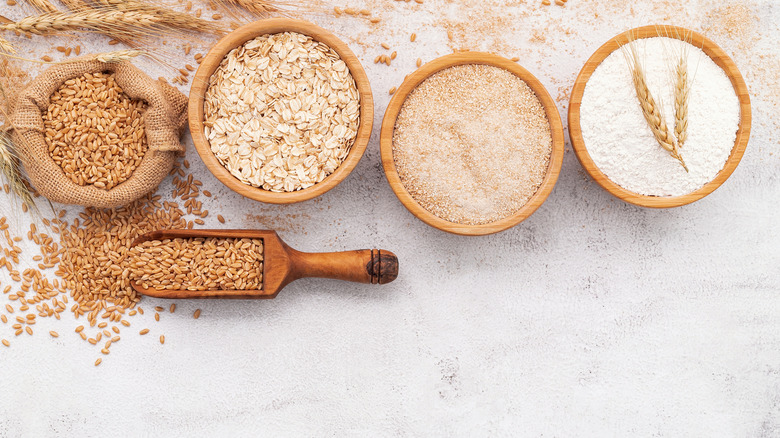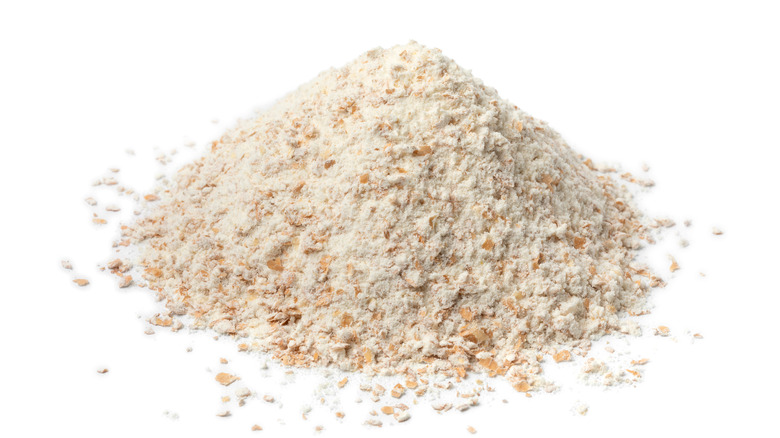You Should Be Cautious Swapping All-Purpose Flour For Whole Wheat
For some time now, medical science has told us that consuming large amounts of refined grains like white flour isn't ideal, and the American Heart Association has gotten behind the call to use substitutes.
But swapping white or all-purpose flour with whole wheat flour isn't something you can do on a whim as the qualities that give whole wheat its nutritional value are the same ones that make it a challenging substitute for white flour. As Food52 points out, all-purpose flour is a mix of both hard and soft wheat that gives flour a protein content of between 10% to 12%. By contrast, whole wheat flour contains up to 15% of protein, more fiber, and more bran.
These differences can have an impact in the formation of gluten that is so critical to baking. As Rose Levy Beranbaum, author of "The Cake Bible" and "The Pie and Pastry Book," points out, via Greatist, flour with a lot of bran doesn't do cakes and pastries any favors. "The bran cuts through the gluten and detracts from the airy texture of the cake or the flaky texture of the pastry, making it dense and pasty and generally undesirable," she says.
Failing to properly manage a swap from white to whole wheat flour could leave cakes and pastries chewy and even bitter.
How to substitute all-purpose with whole wheat flour
In spite of this, some substitution is possible, as long as you are savvy about it. One important thing to remember is that the more whole wheat flour you substitute for white, the greater the impact it will have on your baked goods, per King Arthur Baking. This means if you swap 25% of the all-purpose flour needed, you probably won't see much difference in taste, texture, or color. Meanwhile, in his book, "How to Cook Everything," via Food52, food writer Mark Bittman suggests you can swap as much as 50% of the all-purpose flour as called for in a recipe with whole wheat flour without seeing too much of an impact on the finished product.
But because whole wheat flour is lighter than white flour, King Arthur suggests basing any substitutions you make on volume, and not by weight — which means a cup, or 120 grams of white flour, would be equal to 113 grams of whole wheat flour.
While white flour may not be the most nutritious ingredient, it still has a place in the kitchen. For this, we are grateful that the American Heart Association is clear about its recommendation about consuming white flour: Their suggestion is not to ban the ingredient altogether, but to consume less of it.

